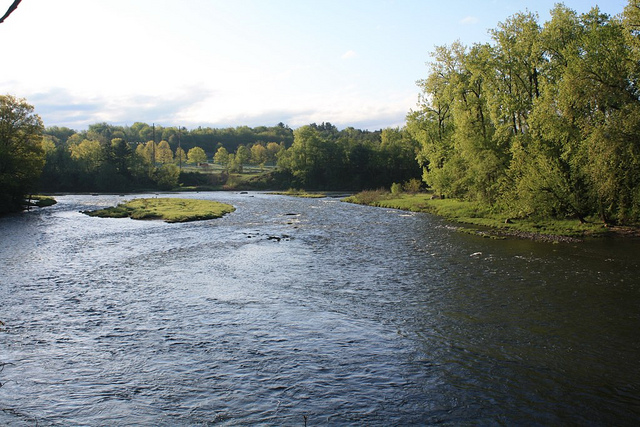Long-Term Water Quality Trends in Lake Champlain Tributaries
Mar. 22nd 2017Many organizations are involved in data analysis, policy development, and restoration efforts to manage nutrients, chloride, and total suspended solids in Lake Champlain. Water quality is impacted by each of these inputs and can result in degraded habitat, contaminated drinking water, and effects on tourism and the local economy. The U.S. Geological Survey (USGS) measures discharges using stream gauges in tributaries throughout the basin. The Vermont and New York State Departments of Environmental Conservation measure water quality for total and dissolved phosphorus, total nitrogen, chloride, and total suspended solids, making the data available on the U.S. Environmental Protection Agency database. In this study, Laura Medalie of the USGS estimated daily and 3-season concentration and flux data from 18 tributaries in the Lake Champlain basin in Vermont, New York and Quebec that had water quality data for at least 20 years.
The USGS regularly conducts analyses of these data for long-term review. In this study, data from four additional years were available (2011-2014) since the last review. Additionally, Medalie applied new analysis tools and model parameters, notably the removal of winter months from the model. Medalie also applied parameters from previous models to compare the new results under the same modeling conditions.
Trends in the full data set (1991-2014) indicate increasing concentration and flux across many of the tributaries in total and dissolved phosphorus, chloride, and total suspended sediments. Total nitrogen trends were decreasing in many of the tributaries.
Medalie analyzed recent data (2000-2014) to identify if any trends have changed. Total and dissolved phosphorus and total nitrogen in many New York tributaries changed from an increasing to a decreasing trend. Most tributaries in Vermont showed little change in nutrient concentration and flux between the two time periods evaluated, maintaining a positive percent change or diminishing slightly for all nutrients.
Chloride concentrations and fluxes improved (had a negative percent change) across almost all tributaries during the recent period compared to the full period. Changes in total suspended solids were variable across the tributaries, with some trends increasing and others decreasing.
Review of model parameters and comparison between long-term and recent trends indicate that the changes in the trends are due to the additional four years of data (2010-2014), particularly in the case of phosphorus.
This study demonstrates that the changes to model parameters from previous reviews of the long-term data are valid. The model estimates provide managers in the Lake Champlain basin with valuable information about nutrient concentration and flux trends. The Lake Champlain Basin Program “Opportunities for Action” management plan uses these data to evaluate progress toward reduction in phosphorus loading.
 ecoNEWS VT
ecoNEWS VT